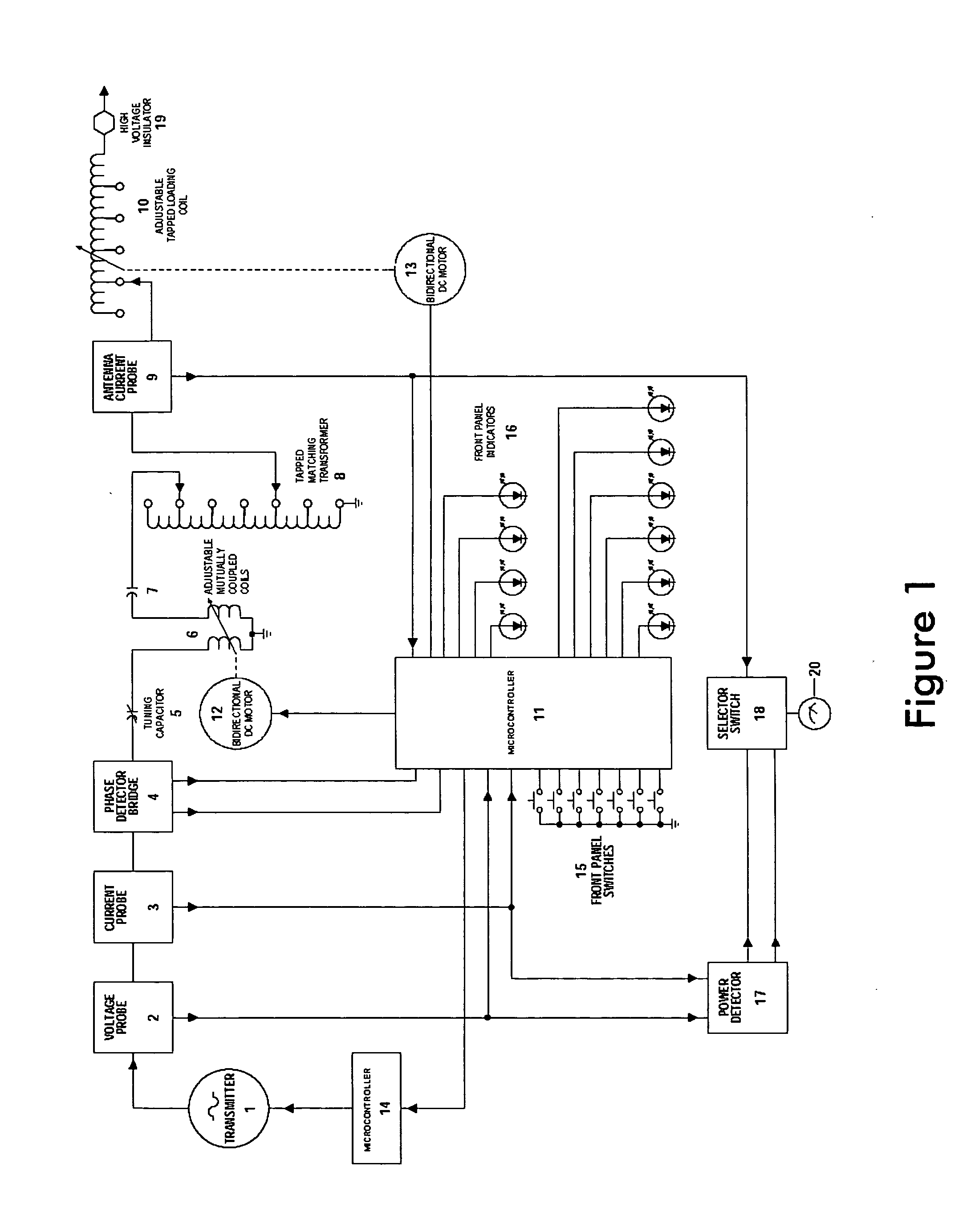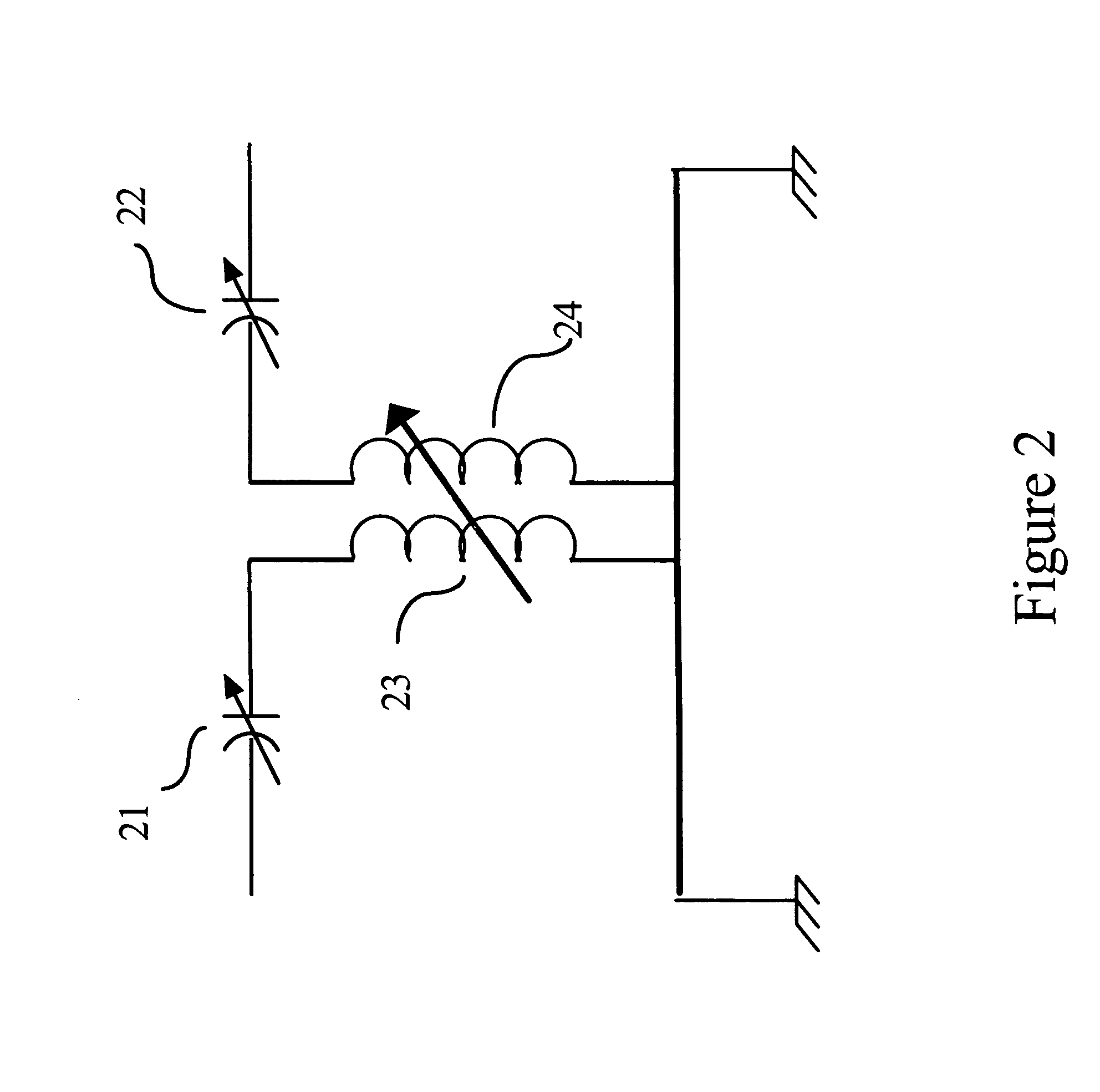Automatic matching and tuning unit
- Summary
- Abstract
- Description
- Claims
- Application Information
AI Technical Summary
Benefits of technology
Problems solved by technology
Method used
Image
Examples
Embodiment Construction
[0015] The present invention utilizes two tuned, mutually coupled coils, between which the coupling factor k can be varied. FIG. 2 shows the circuit diagram of this arrangement. The inductances of the primary 23 and the secondary 24 windings of the mutually coupled coils are equal and are tuned for series resonance at the operating carrier frequency by equal capacitors 21 and 22.
[0016] Capacitors 21 and 22 are tuned to resonate with the equal fixed inductance values of the primary 23 and the secondary 24 windings of the mutually coupled coils hence their reactances are numerically equal to XL(i.e. ωL=1 / ωC).
[0017]FIG. 3 shows the equivalent circuit of this arrangement shown in FIG. 2. An analysis of the equivalent circuit as shown in FIG. 3 proceeds as follows: [0018] Capacitors 25 and 28 have equal impedance values, of −jωL (since |XL|=|XC|); [0019] Inductors 26 and 27 have equal impedance values, jω(L−M); [0020] Inductor 29 has an impedance value of jωM; and [0021] Resistor 30 ha...
PUM
 Login to View More
Login to View More Abstract
Description
Claims
Application Information
 Login to View More
Login to View More - R&D
- Intellectual Property
- Life Sciences
- Materials
- Tech Scout
- Unparalleled Data Quality
- Higher Quality Content
- 60% Fewer Hallucinations
Browse by: Latest US Patents, China's latest patents, Technical Efficacy Thesaurus, Application Domain, Technology Topic, Popular Technical Reports.
© 2025 PatSnap. All rights reserved.Legal|Privacy policy|Modern Slavery Act Transparency Statement|Sitemap|About US| Contact US: help@patsnap.com



